 Technique knitting enterlak - create beauty easily!
Technique knitting enterlak - create beauty easily!
How often do I need to change bedding
In total, a person spends a third of all life time in a dream. Its quality, which depends on many criteria, is the key to health and vitality. One of the above criteria is purity. For a good sleep in the bedroom should be clean, dry, comfortable temperature, ventilated. Textiles play an important role: its quality and purity. Here a logical question arises, how often do you need to change bedding at home for a good sleep. Today we will solve it.

About how often you need to change bedding, each housewife has his own personal opinion.
Content
Why regular replacement is important
Clean - the guarantee of health. This applies to all spheres of human life. A clean bed in the first place prevents the appearance of certain diseases and unpleasant reactions.

To lie down after a hard day in a clean and fresh bed is a real pleasure.
If you do not reset the bed regularly, unpleasant consequences await you.
- Dust. Any fabric tends to accumulate dust. It contains many pathogenic microbes. The less often you make new sheets, the more often you or your child will have diseases of the respiratory organs.
- Bed bugs. There is such a thing as “bed bugs”. Of course, they appear under conditions of perfect sanitation, but still they should be remembered.
- Allergic reactions. They can manifest as in the form of effects on the respiratory system (runny nose, sneezing, coughing), and irritation of the skin.
To avoid these unpleasant consequences, it is necessary to regularly change sheets, pillowcases and duvet covers.

Particular attention should be paid to pillowcases that need to be changed more often.
What factors affect the frequency of replacement
With the regularity of the issue resolved. Now about the intensity. Some housewives do not know how often to change bedding. This is normal, as the intensity is individual and depends on many factors. For example, a children's bed requires multiple shifts.
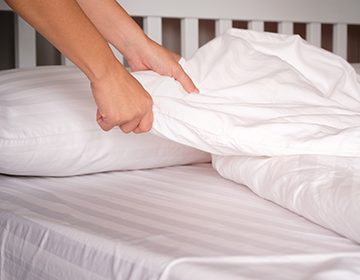
Washing gives things freshness, eliminates unpleasant odors and stains.
Also affects the physical condition of the person. Here the importance of personal physical indicators: someone sweats stronger, someone less. This category includes the presence of various diseases.
The choice of fabric type is an influential indicator. Different types of dust accumulate unevenly and collect dirt particles. When choosing textiles, be sure to read the properties of the material from which it is made.
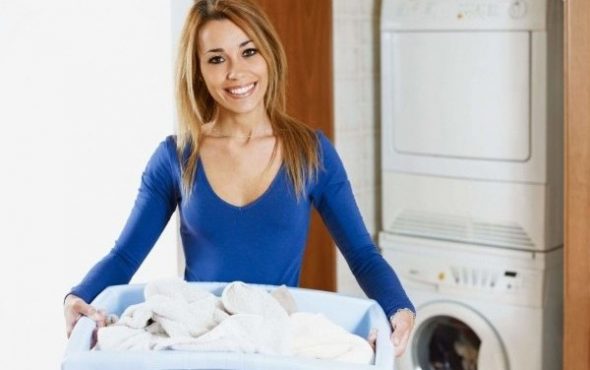
To be sure of the cleanliness and safety of the laundry, you should wash it at 60 degrees
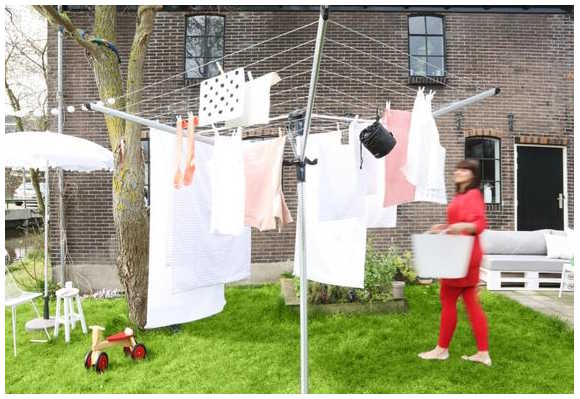
Bed linen is better to dry outside, if the weather permits
And now more about each criteria.
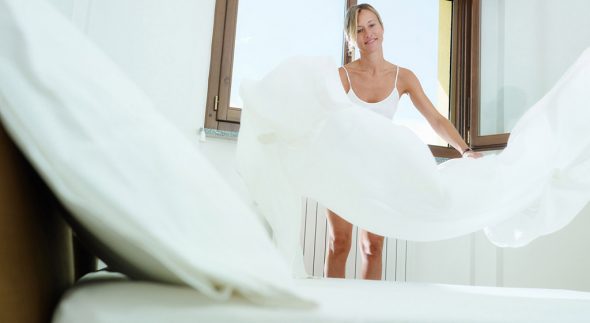
To eliminate the possibility of unwanted occupants in the beds and to protect their loved ones from health problems, it is worth listening to the recommendations.
Age
In each age category, physical indicators are different.The body grows, the separation of various secrets, respectively, undergo changes. This, in turn, affects the intensity of bed pollution. Age is one of the important indicators, let's proceed to its analysis.
- Little kids
To this category we include newborns, babies, children up to 3 years. Their activity at night is quite high, which necessitates more often to re-lay the bed.
For a baby, it is necessary to have several sets of diapers and sheets, because sometimes they have to be restarted even several times during the night.
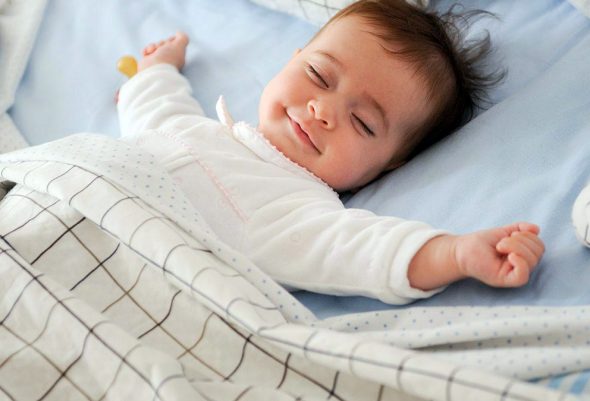
Kids require frequent bed changes due to possible contamination and increased cleanliness requirements.
On a note!
Children from 8 months is not advisable to put to sleep in a diaper.
It is worth noting that sleeping in a diaper can adversely affect the health of the baby. It is better to take it to the toilet just before bedtime, to wake up for the same purpose several times during the night. A lot of trouble, but in this case, your baby will not torment irritation, allergic reactions, expressed as a rash.
Children from 1 to 3 years, too, sometimes pee in the bed. It happens less often, but it has a place to be. In this case, proceed according to the above scheme, but teach a small family member to the potty, explaining to him that before going to bed you should go to the toilet, and when you wake up at night to call your mother or sit on the pot yourself.
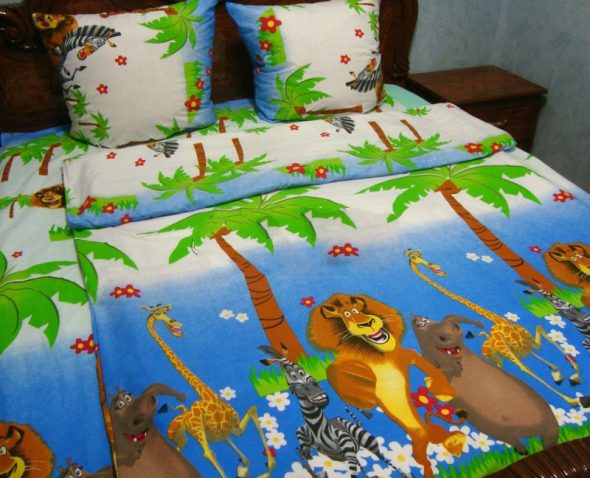
Baby bedding for a baby who sleeps in a separate cot
So, kids often have to re-lay the bed, sometimes even several times a night.
Preschoolers and younger students
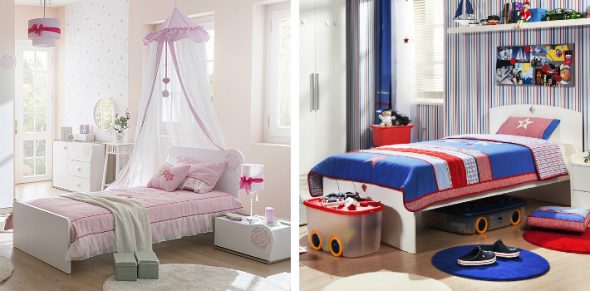
For schoolchildren, it’s enough to buy two beautiful and suitable in size sets, so that the bed replacement process would not be so boring.
Preschoolers are considered to be children from 3 to 6 years. With this age group things are easier than the previous one. Your work with the child, that is, the quality of education, has an impact here. If you managed to wean the youngest preschooler up to 4-5 years old written in bed - you will have to change the sheets less often.
Sometimes younger students may soil the bed, playing on it or bringing food to it. Here, too, an important role is played by the factor of education. However, incidents happen when a child can paint a duvet cover, stain it with paints or clay.
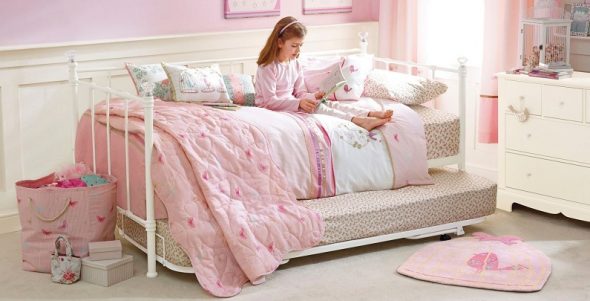
For older children, it is enough to change the bed once a week or in case of accidental pollution as needed.
During this period, not only the frequency of changing textiles, but also washing plays a role. The latter here becomes especially difficult. Be sure to stock up on tips on how to wipe paint, ink, grass, and other hard-to-clean materials. Do not use aggressive detergents. They can cause an allergic reaction in the baby.

Bleaches and stain removers for different stains on different types of fabric
Thus, the replacement of sleeping textiles in preschool and junior schoolchildren is carried out less frequently, depending on the rate of contamination.
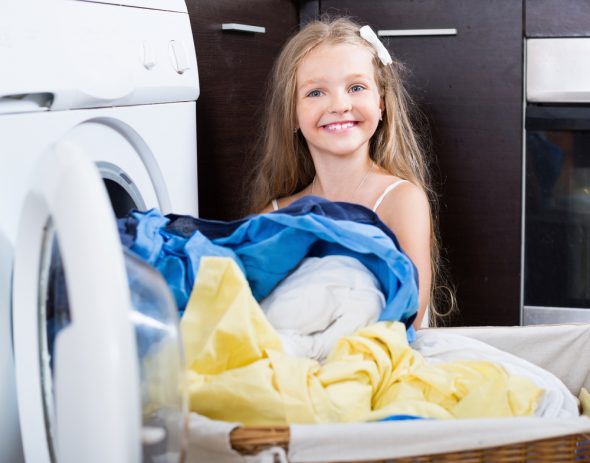
Children of pre-school and school age can be attracted to help in the replacement of bed
Teenagers
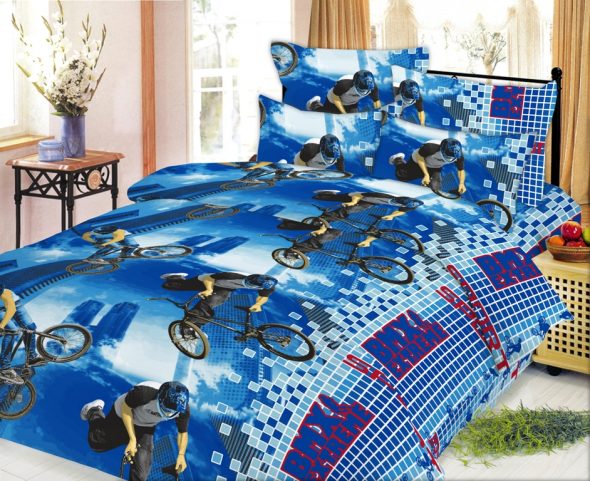
A beautiful and bright bed set for a teenage boy will encourage you to keep your bed clean and tidy.
In high school age, when a child becomes a teenager, significant changes occur in the body. During this period, a person may begin to sweat more or begin to salivate more by staying on the pillowcase.
In adolescence begins puberty. In boys during this period, night fields can occur. In girls - start menstruation. Therefore, for a teenager you need to have a spare clean set of sleeping textiles in case of surprises.
Here, parental attention plays a big role. A teenager may be embarrassed to talk about certain topics. Because the task of parents to monitor the cleanliness of the teenage bed, and if necessary, carefully talk on sensitive topics.
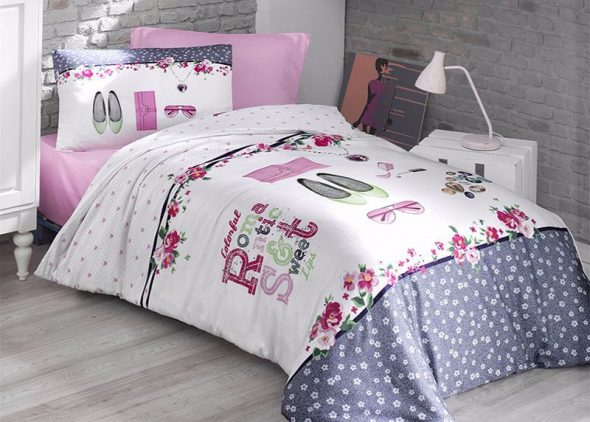
A tender bedding set for a girl will make you feel great and comfortable.
The physical state

Bed linen for adults can be changed once a week in winter or 2 times in summer
Of great importance is the physical condition, not dependent on age. A sick person needs to pay considerable attention, regardless of whether he is a bed patient or a person who just suffers from a cold.
How often do I need to change the bed for the patient?
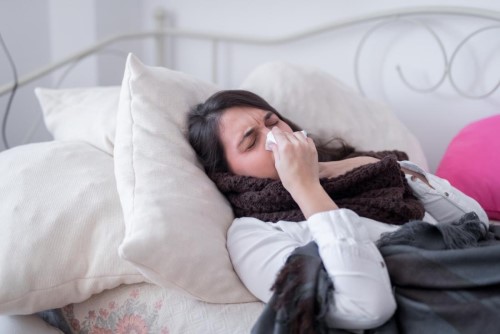
Bed linen for a cold patient should be changed as often as possible and do not forget to ventilate the room
First, about simple diseases. The most common of these is the common cold. With colds, increased sweating, salivation, there is a runny nose. All of these secretions can remain in bed, so when you have a cold, you have to stop it more often. It is advisable to replace every 2-3 days. This is also due to the fact that pathogens tend to accumulate in the tissue, causing re-infection.
Speaking about bedridden patients, they need to change the sheets every day or every 2-3 days. It depends on the condition of the patient, on how regularly he is taken out for a walk and bathed.

Care of bed patients should be made in accordance with the requirements for its content.
Type of fabric
This factor also affects the frequency of replacement. Synthetic fabrics accumulate dust faster, but most of them are less susceptible to contamination. Therefore, synthetic laundry can last longer without washing.
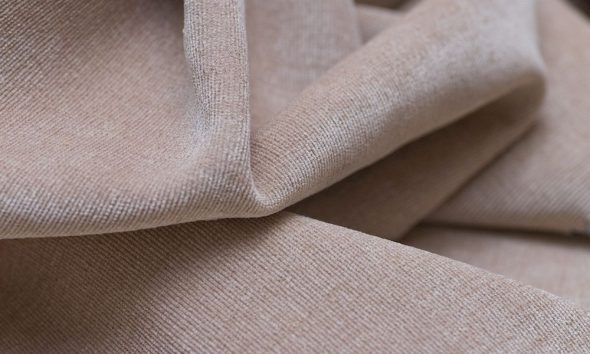
Microfiber clothes and linens made of synthetic material are valued for softness, pleasantness to the body and beautiful appearance.
Natural materials are more fastidious to the conditions of operation. They strongly absorb odors, more dirt remains on them. For natural textiles, it is not enough to walk with a damp cloth to remove a small, fresh stain. In this case only washing is necessary.
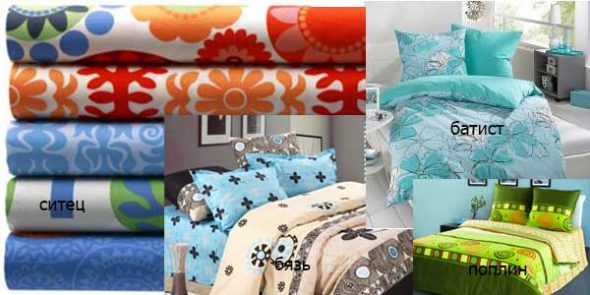
Natural fabrics for bed sets
It is worth paying attention to the density of tissues. Intensive washing is not recommended for some materials. For such a case, keep 3 sets to be able to use each one less often.

Beautiful bed sets will delight you longer with their appearance, if there are several
But for the laundry to last for a long time and remain as new, be sure to follow the washing recommendations: use a special mode, powder without aggressive additives and conditioner.
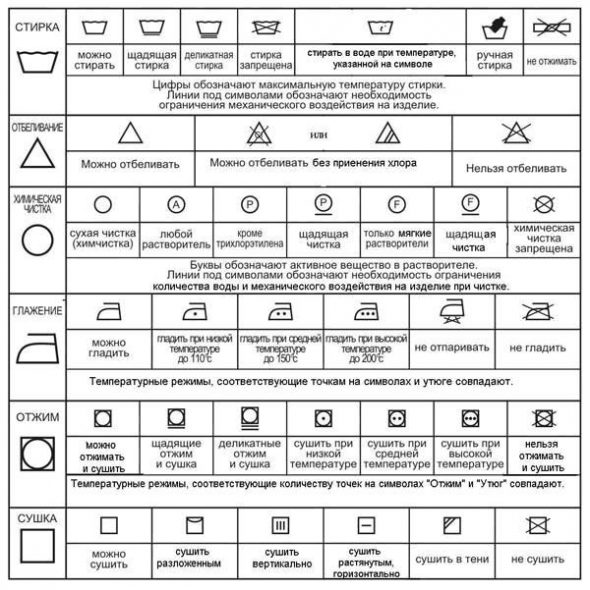
For bed from different fabrics there are recommendations that are listed on the labels
Summarize
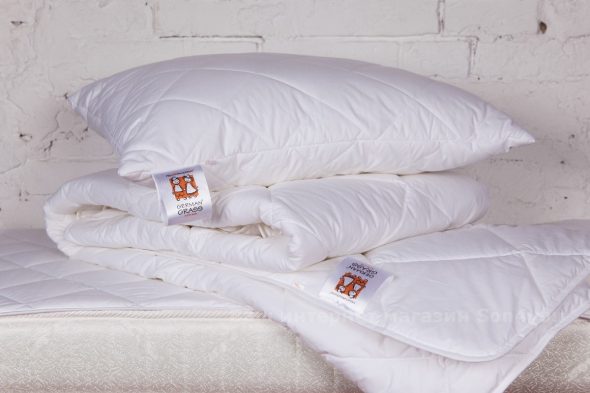
Both pillows, and blankets, and mattress covers need periodic processing.
We examined how often sleeping textiles change depending on the operating conditions. Let's summarize our research.
Terms of Use
Replacement
| Newborns and babies | Small child | Sick person | Teenager |
| Every day (sometimes several times) | Once every 3 days | Once in 1-2 days | Once or twice a week |
The table presents a summary of the total. Of course, the frequency of bed linen change depends on many other factors. Their details we have disassembled in the relevant sections.
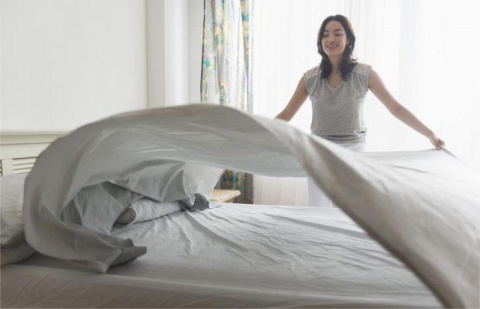
Replacing the bed for an adult bed takes a little time, but gives a feeling of freshness, lightness and cleanliness.
Video: How often should I change my bedding at home? How often wash bedding?
 Technique knitting enterlak - create beauty easily!
Technique knitting enterlak - create beauty easily!
 How to wash a bamboo blanket in a washing machine?
How to wash a bamboo blanket in a washing machine?
 Plaid "Bunny with ears"
Plaid "Bunny with ears"
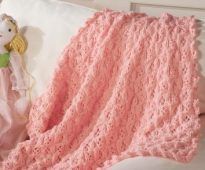 Knit children's blanket knitting
Knit children's blanket knitting
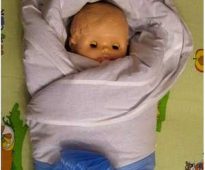 How to wrap a baby in a blanket?
How to wrap a baby in a blanket?
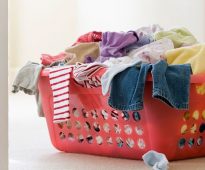 How to determine the weight of bed linen
How to determine the weight of bed linen






